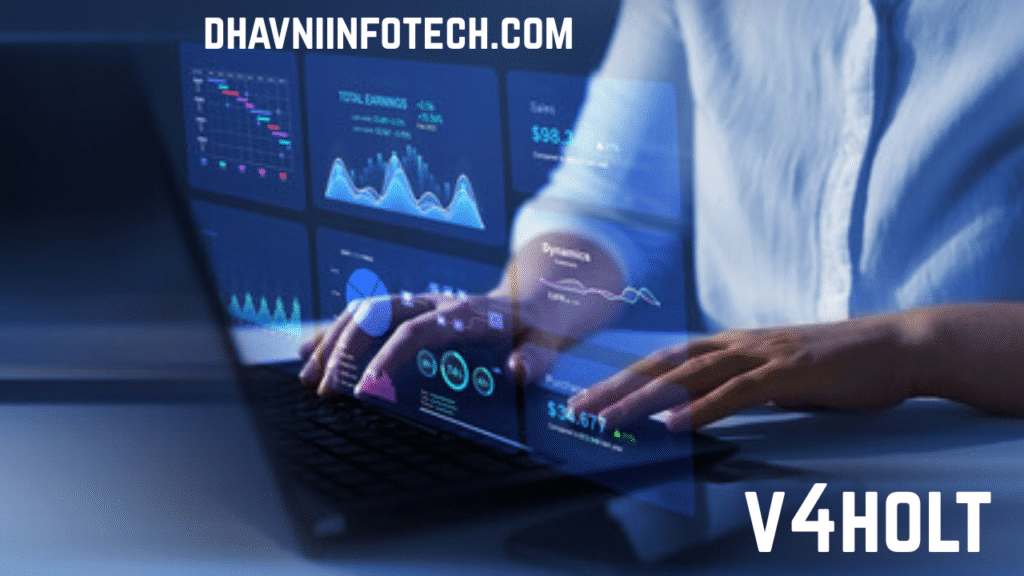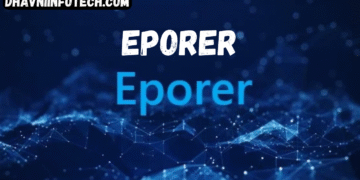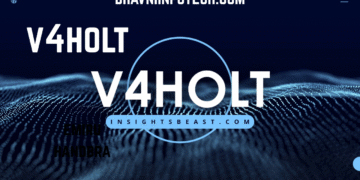The adoption of V4holt provides substantial benefits for organizations across all sectors, primarily by enabling smarter, faster, and more accurate decision-making through intelligent data analysis. By automating repetitive processes, v4holt reduces human error, frees up resources, and ensures operational efficiency, allowing employees to focus on higher-level tasks that require creativity and strategic thought. Its modular and scalable design ensures that it can be customized for specific industry needs, whether in financial planning, healthcare resource allocation, manufacturing optimization, or educational technology solutions. The predictive capabilities of v4holt empower organizations to anticipate market trends, plan logistics with precision, and optimize supply chains, giving a competitive advantage in rapidly changing environments. Moreover, v4holt facilitates innovation by enabling experimental approaches to problem-solving, allowing businesses to model outcomes, simulate scenarios, and make informed strategic decisions without the risks typically associated with trial-and-error methods.
However, implementing v4holt is not without challenges. The system requires high-quality data inputs, technical expertise for deployment, and ongoing maintenance to ensure optimal performance. Poor or incomplete data can result in inaccurate predictions, while the complexity of the technology may pose barriers for smaller organizations without dedicated technical teams. Additionally, ethical concerns such as data privacy, bias in algorithms, and transparency of decision-making must be carefully managed to ensure responsible usage. The costs associated with infrastructure, cloud services, and continuous updates may also be significant, requiring organizations to balance investment with anticipated returns. Despite these challenges, the long-term benefits of v4holt—including efficiency gains, cost reduction, enhanced decision-making, and improved adaptability—make it a valuable investment for organizations seeking to stay ahead in a competitive technological landscape.
Technological Architecture and Core Features of v4holt

The underlying technology of v4holt is a sophisticated blend of artificial intelligence, machine learning, neural networks, and advanced data analytics. Its architecture allows for real-time data processing, enabling rapid response to changing conditions or emergent trends, a feature particularly valuable in industries that rely on instant decision-making, such as finance, healthcare, and logistics. The system’s algorithms are capable of pattern recognition, anomaly detection, and predictive modeling, allowing v4holt to provide actionable insights even from complex, unstructured datasets. Its modular framework ensures flexibility, enabling integration with existing IT infrastructure, cloud services, and other enterprise systems. Furthermore, v4holt emphasizes user-friendly interfaces and actionable dashboards, ensuring that insights are not just generated but can be understood and applied effectively by decision-makers without requiring specialized technical skills. These core features combine to make v4holt a powerful tool that bridges the gap between raw data and strategic action, making it essential for organizations aiming for data-driven excellence.
Another key technological advantage of v4holt is its ability to continuously learn and adapt through self-improving algorithms. Unlike static systems, v4holt refines its predictions and processes as new data is fed into the system, ensuring that its outputs remain relevant and accurate over time. This adaptive learning capability allows organizations to respond to dynamic market conditions, operational shifts, and evolving customer demands efficiently. Additionally, v4holt supports real-time monitoring and reporting, which enhances transparency, accountability, and the capacity to make proactive adjustments. By combining automation, predictive intelligence, and adaptability, v4holt offers a robust platform for organizations to optimize both strategy and operations, significantly reducing the risk of errors while maximizing the effectiveness of resource deployment and decision-making.
Applications of v4holt Across Industries

The applications of v4holt are vast, spanning healthcare, business, finance, education, logistics, and manufacturing. In healthcare, v4holt assists in patient monitoring, predictive diagnostics, treatment optimization, and hospital resource management, contributing to improved patient outcomes and operational efficiency. Financial institutions use v4holt for fraud detection, market trend prediction, risk assessment, and portfolio optimization, enabling better-informed decisions and increased security. In manufacturing, v4holt enhances production monitoring, predictive maintenance, and supply chain management, reducing downtime and optimizing resource allocation. Educational institutions benefit from personalized learning experiences, student performance tracking, and administrative efficiency, allowing educators to provide targeted support while optimizing institutional resources. Across all sectors, v4holt serves as a critical tool for analyzing complex datasets, identifying patterns, and providing insights that are both actionable and strategic.
Additionally, v4holt is increasingly being integrated with emerging technologies such as the Internet of Things (IoT), cloud computing, and big data platforms. IoT integration allows v4holt to collect and process real-time sensor data, enabling predictive maintenance, smart monitoring, and automation in manufacturing, logistics, and urban infrastructure management. In conjunction with cloud computing, v4holt ensures scalability and accessibility, allowing multiple users to access insights from anywhere while maintaining high-performance processing. Big data integration allows v4holt to handle extremely large datasets, making it possible to detect subtle trends, correlations, and anomalies that would be impossible to identify manually. This combination of technologies underscores v4holt’s versatility and its capacity to transform operational efficiency and strategic decision-making across industries.
Challenges Ethical Considerations and Implementation Strategies

While the benefits of v4holt are substantial, organizations must be aware of the potential challenges and ethical considerations associated with its deployment. Data privacy and security are critical concerns, as v4holt often requires access to sensitive information. Ensuring compliance with local and international regulations, such as GDPR, is essential to mitigate legal risks and maintain stakeholder trust. Algorithmic bias and transparency also pose challenges; organizations must ensure that v4holt’s decision-making processes are explainable and fair, avoiding unintended discriminatory outcomes. Proper training and change management are crucial to ensure employees can leverage v4holt effectively, integrating insights into daily workflows without disruption. Implementing v4holt in phased stages, starting with pilot projects, allows organizations to evaluate performance, refine processes, and scale deployment responsibly.
Successful v4holt implementation requires continuous monitoring, regular updates, and a focus on data quality management. Organizations must invest in high-quality datasets, maintain infrastructure capable of handling computational demands, and ensure that systems are regularly updated to adapt to evolving needs. Collaboration with AI experts and ongoing staff training ensures that v4holt is used effectively, maximizing both productivity and innovation. Additionally, monitoring and evaluating outcomes allows organizations to assess ROI, identify gaps, and refine strategies for better results. By carefully managing both technical and ethical considerations, organizations can fully leverage v4holt’s capabilities while minimizing risks, positioning themselves for long-term growth, efficiency, and technological leadership.
Future Prospects and Transformative Potential of v4holt
Looking ahead, v4holt is expected to play an increasingly central role in the evolution of intelligent systems. Integration with emerging technologies such as quantum computing may dramatically enhance processing speed and analytical capability, allowing v4holt to tackle problems that are currently unsolvable with conventional systems. As AI continues to advance, v4holt will likely incorporate more sophisticated explainable AI frameworks, ensuring transparency in decision-making and fostering greater trust in automated systems. Its predictive and adaptive intelligence will continue to evolve, enabling organizations to anticipate changes proactively and respond faster than competitors. The potential for v4holt to transform industries is immense, providing organizations with unprecedented insights, operational efficiency, and strategic foresight.
The transformative potential of v4holt extends beyond technology into the broader realm of business strategy, societal impact, and global efficiency. By enabling organizations to optimize processes, reduce waste, and predict trends accurately, v4holt contributes to smarter decision-making at every level. Its applications in healthcare, education, manufacturing, logistics, and finance demonstrate its versatility and importance in modern society. Furthermore, as more organizations adopt v4holt, it is likely to set new standards for efficiency, productivity, and innovation, driving technological progress and redefining how data, intelligence, and automation intersect in the digital age. Embracing v4holt is therefore not just a technological choice but a strategic imperative for forward-thinking organizations seeking to remain competitive, innovative, and adaptive in a rapidly changing world.
Conclusion
In conclusion v4holt represents a groundbreaking advancement in intelligent systems, combining artificial intelligence, machine learning, and data analytics to transform industries, optimize operations, and enhance decision-making. Its adaptability, predictive capabilities, and automation potential make it a powerful tool for healthcare, business, education, manufacturing, and logistics. While challenges such as data quality, implementation complexity, and ethical considerations exist, the long-term benefits of efficiency, innovation, and scalability make v4holt a critical asset in modern technology. As it continues to evolve, v4holt is poised to shape the future of intelligent systems, offering organizations unprecedented opportunities to innovate and thrive in an increasingly data-driven world.
FAQs
What is v4holt?
v4holt is an advanced AI-driven system that integrates machine learning, predictive analytics, and automation to optimize workflows and provide actionable insights across various industries.
What industries can benefit from v4holt?
Healthcare, business, finance, education, logistics, and manufacturing are among the primary industries that can leverage v4holt for improved efficiency, decision-making, and operational optimization.
What are the key features of v4holt?
Key features include real-time data processing, predictive modeling, adaptive learning algorithms, modular design, and intelligent automation capabilities that enhance operational and strategic outcomes.
What challenges are associated with v4holt?
Challenges include dependency on high-quality data, technical expertise for implementation, ethical concerns such as bias and privacy, and the need for ongoing updates and maintenance.
What is the future potential of v4holt?
The future of v4holt involves integration with IoT, cloud computing, quantum computing, and explainable AI frameworks, enabling smarter, faster, and more adaptive solutions across industries.
Read More: Emiru Handbra and the Rise of Cosplay Culture Exploring Creativity Viral Fame and Online Boundaries






















